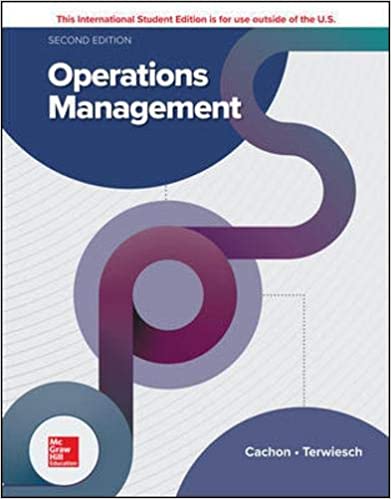A retailer is considering two possible definitions of in stock: I. A product is in stock if
Question:
A retailer is considering two possible definitions of “in stock”:
I. A product is in stock if it has at least one unit on hand at the end of the day.
II. A product is in stock if it has satisfied all demand during a day. For a fixed order-up-to level, which definition yields the higher instock probability?
a. Definition I because if one unit is on hand, then all demand must have been satisfied.
b. Definition II because the firm is more likely to satisfy all demand than to end the day with one unit on hand.
c. Definition II because if all demand is satisfied, then there must be some inventory left over.
d. Either one is possible because it will depend on the particular order-up-to policy chosen, the distribution function of demand, and the lead time.
Step by Step Answer:

Operations Management
ISBN: 9781260547610
2nd International Edition
Authors: Gerard Cachon, Christian Terwiesch





